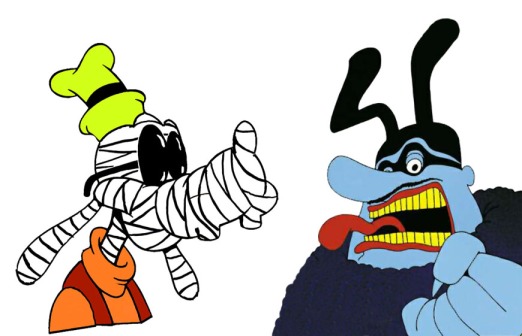Okay, so there I was. Smashwords had simultaneously translated my book to multiple e-book formats and put it up on Smashwords for sale, and I discovered that all of the text in the book was bright blue. Not just text that’s okay in blue, like the links in the table of contents–everything.
Now when you publish at Smashwords, you get put up in the “new book” section on their main page, held up in front of all the rest–for about a minute or two. Forget “fifteen minutes of fame,” I had maybe ten, and my e-book was printed in blue ink.
If I fixed it, I could upload a new version immediately. But what was wrong? None of the styles I was using in the document said “blue color” on the font. It was the usual “automatic” for color, which for years has basically meant “black.”
I changed the font colors for all the main text styles I was using from “automatic” to “black,” trying to force it, and uploaded the file again. When the Meatgrinder translation came back, the text was still blue.
A frantic search through the Smashwords FAQ got me this question: “My entire book is in red font (or some other unintended color) in HTML, EPUB and MOBI. Why?” Their answer involved digging deep into the Style menus, to where the “all styles” list hangs out. I discovered there was a whole bunch of weird styles stuck in my document, many of which I wasn’t using at all.
One of these unused styles was “Body Text,” and the color was blue! I deleted it. I also deleted a red one just to be safe. This time when I uploaded the Word file and downloaded the e-book translations, the text was the proper black color. Whew.
Just another example of the infamous “Invisible Goofy,” my name for a setting or formatting glitch that never shows up in an original document, but causes havoc when you convert the file to another form or transmit it somewhere.
Minus ten points to Smashwords for making me fix this mess while my book was already “live.” Although I understand why they do it that way, it’s like standing up on a billboard fixing a big typo while everyone’s down below looking up at you and taking pictures.
But, plus fifty points to Smashwords for some really robust customer support documentation. I found out all sorts of things about formatting Word for EPUB that I never knew before, and they seem to have answers for even the most obscure issues.
Castle Falcon is awaiting review for wider distribution to other markets, but I’ve already sold one copy off the Smashwords page. Since I didn’t have to pay a nickel to do all this, I’m already money ahead!

